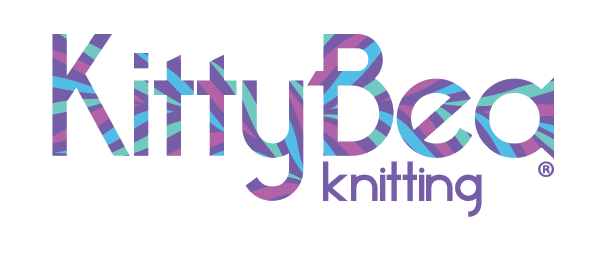I'm in LOVE with linen. So far, I've written four patterns (three have been published) and each one uses linen. I've written a pattern for two of Quince & Co.'s yarns, Sparrow and Kestrel, Louet's Euroflax Sportweight and Shibui's Reed (the Reed pattern is still going through the test knit phase). Especially for my native climate in Florida, linen performs amazingly well. It also works as a three-season fiber in other climates. Many people think of cotton for warmer climates. The biggest difference between linen and cotton has to do with humidity. Linen doesn't hold onto humidity the way cotton can. Even bamboo can be guilty of this. When some plant fibers take on moisture, it can cause them to stretch and lose their shape. This can be used to your advantage when wet-blocking. Wet-blocking is essential to knitting with linen or any plant fiber. Linen does not have protein like an animal fiber, so it doesn't have any "bounce". To get a proper gauge and to maximize drape, wet-blocking linen is a must. Good quality plant fibers will regain their shape (if they've stretched a bit) when they are wet-blocked. I admit, when knitting for myself, I almost exclusively knit with linen. The more you wash and wear linen, the softer it gets. And if you aren't a fan of the texture on the skein, you can soak it in water (with or without Soak or Eucalan) for 20-30 minutes, hang and allow it to air dry. That will soften it considerably before you knit and wet-block your swatch or garment. I have converted quite a few knitters into fans of linen by making that suggestion. Linen will also "bloom" when it is wet-blocked. Don't be surprised if you knit a swatch that seems a tad sheer, only have it "fill in" when its soaked and dried. It is often recommended that you knit linen with wooden needles. I wholeheartedly agree with that suggestion. There are many choices available for wooden needles. Bamboo is probably the most popular, but be sure to check out Addi's Olivewood, Cubic's laminated rosewood or Lykke's Driftwood needles.
The first garment I knitted for myself (other than the insane Knit, Swirl coat) was Knitbot's Surrounding Tank. I should have known I would be designing at some point. I remember altering the pattern to have less ease and spacing out the shaping as I added length to fit my height. But what I remember most is Quince & Co.'s Sparrow yarn. I was not intimidated by the firm texture. Instead, I was intrigued by the sheen and smoothness of the yarn. Once I knitted a swatch and wet-blocked it, I was convinced that my finished piece would be perfect. I tell customers at the shop (A Good Yarn Sarasota) all the time, my linen garments remind me of a high end, expensive Eileen Fisher piece. Another tip that will help when you're knitting with linen: Your tension shouldn't be hard on your hands. If your gauge is too loose, go down a needle size. People often make the mistake off putting too much stress on their hands when knitting with linen. It should be an easy and enjoyable process, the same as knitting with an animal fiber. Speaking of animal fibers, I do have many pieces I've made with wool, alpaca, silk and even yak. I'm working on a pattern right now that uses one of my own hand-dyed yarns, Sunset, that is a blend of superfine alpaca and silk. Every fiber has its place and the fact that we have all these fibers and yarns available to us, is truly amazing.
For my newest pattern, Donna, I used Louet's Euroflax Sport. I wanted a heavier gauge than what Sparrow offered for this particular project. It is thicker/heavier than Quince & Co's Sparrow and does take a couple wet-blockings to truly soften up. Again, you can expedite that by soaking your yarn and allowing it to dry before knitting with it. Keep in mind, the pattern does call for two wet-blockings in the instructions.
The Donna Tee/Pullover was inspired by custom projects on Ravelry, where users combined the principles of a few different patterns. They came up with the idea for this version and had a fair amount of notes, but there was no set gauge or design. After it was suggested by my oh-so-helpful coworkers, I decided to organize their projects into a fully designed, set pattern.
I had originally planned on this being a free pattern. But after "hunkering down" for Irma and seeing the catastrophic damage she left behind, I've decided that I will instead donate all proceeds from the sale of this pattern to Hurricane Irma & Maria relief. My family, friends and hometown truly lucked out. We were right in Irma's crosshairs before she made landfall in FL south of us and then she stayed east of us. Except for being without power for almost a week, our canopy road getting a serious pruning and losing all our perishable food, we had no damage. I feel compelled to help others who weren't as fortunate. After watching the way Maria struck Puerto Rico causing immeasurable damage, I decided that I will charge for the pattern and every cent will be donated to hurricane relief efforts. After all, someone should benefit from the hard work of putting together a pattern. The need for help will not cease after a couple of weeks. It will take much longer for some to regain even a fraction of what they had before these storms.
The name of the pattern comes from Hurricane Donna. Donna was a major hurricane that hit SW Florida in 1960 on the exact day Irma hit, September 10th.
